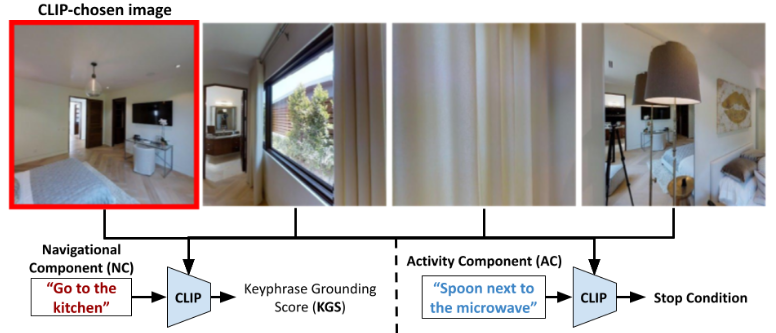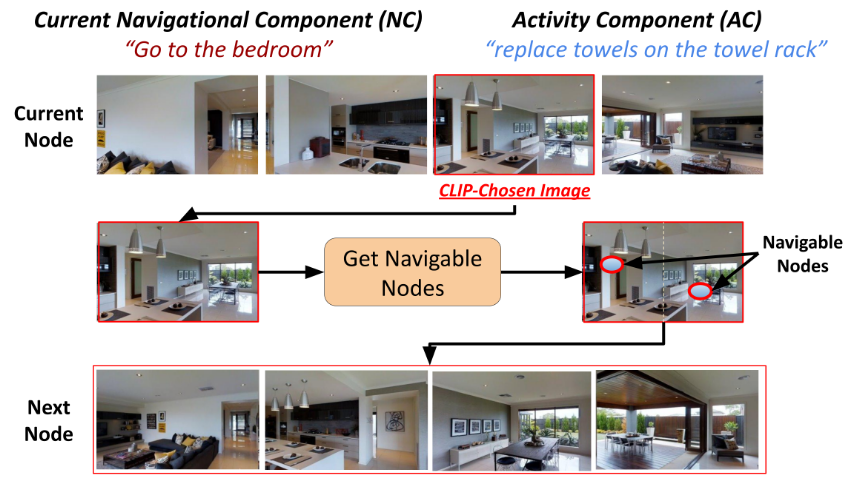NLMap (4/4)
To complete a task specified by human instruction, the robot will query the scene representation for relevant information.
- parsing natural language instruction into a list of relevant object names
- using the names as keys to query object locations and availability.
- generating executable options based on what’s found in the scene, then plan and execute as instructed.
CLIP-Nav (1/3)
CLIP-Nav [1] examines CLIP’s capability in making sequential navigational decisions, and study how it influences the path that an agent takes.
- Instruction Breakdown: Decompose coarse-grained instructions into keyphrases using LLMs.
- Vision-Language Grounding: Ground keyphrases in the environment using CLIP.
- Zero-Shot Navigation: Utilize the CLIP scores to make navigational decisions.
CLIP-Nav (2/3)

- Ground the NC on all the split images to obtain Keyphrase Grounding Scores (KGS). The CLIP-chosen image represents the one with the highest KGS, which drives the navigation algorithms.
- Ground the AC and use the grounding score to determine if the agent has reached the target location (stop condition).
CLIP-Nav (3/3)
At each time step:
- split the panorama into 4 images, and obtain the CLIP-chosen image
- obtain adjacent navigable nodes visible from this image using the Matterport Simulator, and choose the closest node.
This is done iteratively till the Stop Condition is reached.
